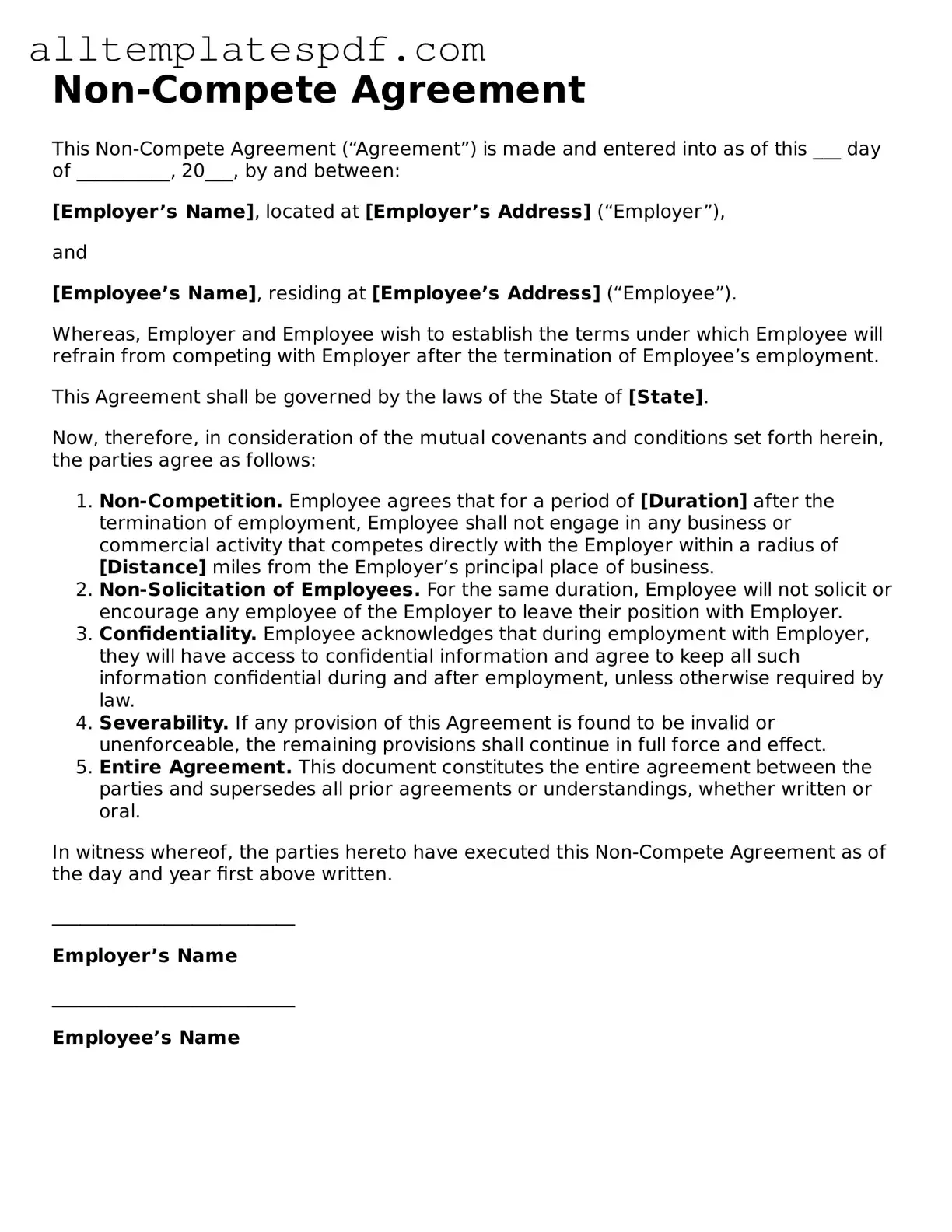Filling out a Non-compete Agreement can be a daunting task, and many individuals make common mistakes that can have lasting consequences. One frequent error is failing to read the entire document carefully. It’s essential to understand every clause and requirement before signing. Skimming through the agreement can lead to misunderstandings about what you are agreeing to, which may restrict your future employment opportunities more than you realize.
Another mistake is not seeking clarification on ambiguous terms. Non-compete Agreements often contain legal language that can be confusing. If certain terms or conditions are unclear, it’s crucial to ask for explanations. Ignoring this step may result in agreeing to limitations that are not in your best interest.
People often overlook the geographical scope of the agreement. Many individuals assume that a non-compete clause only applies to their current location. However, it can extend to a wider area, sometimes even nationwide. Understanding the geographical limits is vital to avoid unintentional violations that could impact your career.
Additionally, individuals sometimes neglect to consider the duration of the non-compete clause. The length of time you are restricted from working in a similar field can vary significantly. A longer duration may hinder your ability to find suitable employment after leaving a job. It’s important to evaluate whether the time frame is reasonable based on your industry.
Finally, failing to negotiate terms is a common mistake. Many people believe they must accept the agreement as it is presented. However, if certain terms seem overly restrictive or unfair, it’s within your rights to negotiate. Engaging in this dialogue can lead to a more balanced agreement that protects both your interests and those of your employer.
